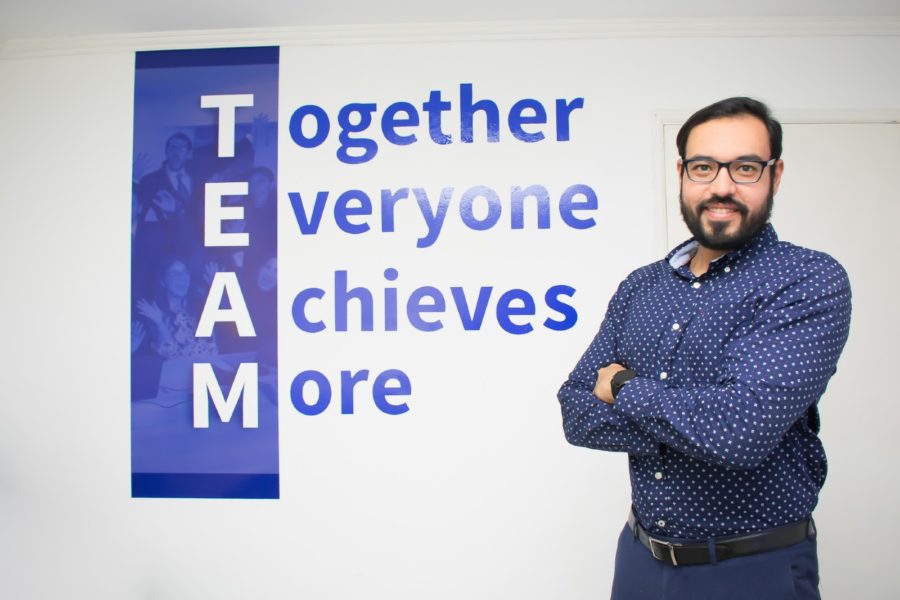Good leadership drives every company, institution, or group in general. We tend to choose certain types of people to put in leadership positions. We think having a charismatic individual for sales or marketing is the best choice.
When it comes to leaders, we use a very similar thinking pattern. We have a team or a department with a set of goals, and we will look for the kind of people we think could drive our talent to those goals in the most efficient way.
When it comes to finding the best fit to lead our teams, we need to be careful since leaders shape teams in a particular way. Not only that, but teams can reject a leader if they are not meeting their group’s needs in terms of where they need to be led.
So, what can we do to be one step ahead and find the solution before the problem even arrives?
A good strategy could be using what Manfred described in his Harvard Business Review article as The Eight Archetypes of Leadership. Locating our prospective leader in one of these leadership archetypes can be a helpful hint on whether they could fulfill their intended mission on the team.
We must be honest about what we want from our people to get that from them.
So, let’s dig into it. Here, we explain some of Manfred’s definitions that will serve as a guideline for what to expect from each kind of leader and which teams they lead best.
The Strategist
The first of these leadership archetypes is the strategist. They are natural planners. To be precise, they see leadership as a game of chess. Just imagine their potential. These leaders could provide north to the department and a detailed step-by-step plan for getting there.
As with any chess game, there could be some setbacks and perhaps some unforeseen obstacles, but their way is to prevent them by considering every possible outcome and deciding accordingly.
“These people are good at dealing with developments in the organization’s environment. They provide vision, strategic direction, and outside-the-box thinking to make successful organizations create new organizational forms and generate future growth.”
We want to have a strategist when their innate skills are implicit in the job description. For example, a position where they need to path new ways and orient groups towards a goal that might not seem like the most intuitive choice but will pay off later on.
And for sure, this idea of how they perform poses the question of whether they might be fit for the team. What kind of team could be best led by them? Most certainly, they need a team that can follow instructions, even if they don’t quite get them yet.
Sometimes, throughout the company’s development, the mission could be hard to do, but trusting the leader and following through is what needs to be done. These leaders might work best with teams that are very well-trained and believe in the company’s values.
Strategist roles executives might need to work on the group trust, but they will most certainly be rewarded by it.
The Change-catalyst
This kind of leader thrives during crises. They view leadership as a turnaround activity. Like in movies, it is not over until it is. With these leaders, you might have a minimum performance, and the next day, they move up your game in ways you didn’t see possible.
“These executives love messy situations. They are masters at re-engineering and creating new organizational “blueprints.”
In companies that deal with ever-changing industries, these leaders are a perfect fit. They could make it work in cutting-edge industries since they are very forward-thinking and know how to deal with the resistance and pushback that might come with making bold choices that could turn everything around. Their ideal team would be full of cooperative people.
Change is never easy and they tend to plan it and execute it often, they need such a team that’s willing to take part in writing history and invest their energy on it.
The Transactor
The best image to describe them could be a salesperson since they perceive leadership as deal-making. Just like the kid who negotiates house chores with their sibling to avoid doing one that they dislike, these leaders are agreeable and possess high convincing power.
“These executives are great dealmakers. Skilled at identifying and tackling new opportunities, they thrive on negotiations.”
They multiply the value of finding agreements that benefit all parties involved in one way or another. Seeing every interaction as a business transaction changes their lens and makes them very aware of their potential and of others as well. They are the ones who know best how a loss can be a win.
They work smoothly with highly qualified teams that know their value and communicate their needs. A participative team can be their asset since it would give the transactor an accurate understanding of where he stands and what they needs to look for to improve and maintain his team at a top performance level.
The Builder

These people can make a company succeed from scratch or make it rise from the ashes in no time. They see leadership as an entrepreneurial activity. It takes a lot of effort and discipline to build anything and much more to create a company.
In the same way, as we drive ourselves to work for our future every day, the builder moves teams, departments, and companies to put one foot in front of the other and move forward.
“These executives dream of creating something and have the talent and determination to make their dream come true.”
Give them a mission, a project to believe in, and they will make it happen. These leaders value the craft of creating and birthing ideas into the real world. They could work really well with structured teams.
When you have an organized department, the builder could rely on those structures to divide the efforts, reduce team stress, and get the team to their destination.
The Innovator
No obstacle is big enough to stop an innovator. They view leadership as creative idea generation. They let their imagination fly and then try to make it feasible. Tradition and old ways are their guidelines, but just that. They won’t be tied by how things used to be made; if they could be better, they will try to make it better.
“These people are focused on the new. They possess a great capacity to solve challenging problems.”
People with these leadership archetypes are creative; they want to forge new pathways to achieve their goals. They might even have unconventional ways of leading, but everything is welcome as long as it works for their team and company.
It seems like communicative and creative teams are for them. They need people who want to impact the world and are not afraid to make mistakes to make something bigger and better.
The Processor
They are the right fit to get things done in the company. They view leadership as an exercise in efficiency. These leaders are optimizers. They use and maintain their resources at their highest potential. Issues get detected and addressed immediately, leaving no time for a problem to become a snowball.
“These executives like organizations to be smoothly running, well-oiled machines. They are very effective at setting up the structures and systems needed to support an organization’s objectives.
Processors want everything in order, they double-check and tend to be very careful with their team’s performance, hopefully, avoiding micromanaging in the process. They create teams that are in sync, and they need everyone to be on board with the mission. These teams could even rely on each other sometimes, but they will get to the finish line at all costs.
The Coach
At some point, we all need to have them in our company. They view leadership as a form of people development. They are the ones that will help you build your team from the ground up. These leaders are people-oriented. They know how to use their most valuable resource, which is talent.
“These executives know how to get the best out of people, thus creating high-performance cultures.”

Growth culture in the workplace sounds like something that this archetype would invent and install. These leaders might think in the longer term regarding a team member’s value. They are the first ones to invest in their current talent to help them become the greatest asset they can be.
Any team could work as their ideal team. There is always room to improve; the coach is about developing the full potential. Their skills could be better used when training or onboarding. These leaders are natural teachers. They look at weak points as learning opportunities.
The Communicator
Last but not least, we have our communicators. No presentation is complete without their valuable input. They view leadership as stage management. They are prepared for any question, they know to a degree every process that involves their craft.
“These executives are great influencers and have a considerable impact on their surroundings.”
These leaders are inspiring. They tend to be good at catapulting ideas into new perspectives. Communicators are also active listeners, and they know when to be quiet to get to know the whole picture and then be able to plan the action. Their ideas are presented in a way that might have the power to change others’ perspectives.
They can work with big teams or companies. Large groups are not an issue; small groups can use their talent, too, but they might need to create a deeper bond with them to trust their authenticity. They need a team that receives and gives feedback constructively.
In every company, we might see these eight leaders co-existing. Perhaps in different areas, or maybe some execute their leadership informally. Or maybe we have one leader who has gone through various archetypes in the company.
These ways of leading could reflect personal features, like charisma or being people-oriented, but they are not written in stone. When you find yourself in need of new leaders, think about your teams’ needs and try to match them with your candidates’ traits to have a first glance at how it could work.
By knowing these leadership archetypes, you can organize leaders and their leadership styles to see how they will contribute most to the company, and you can also use them to see what is lacking. But most importantly, to make things move forward. So, what are you waiting for?
If you want to learn more about business management, be sure to follow us on Instagram and subscribe to our YouTube Channel!
See more articles by Laura Navarro.





